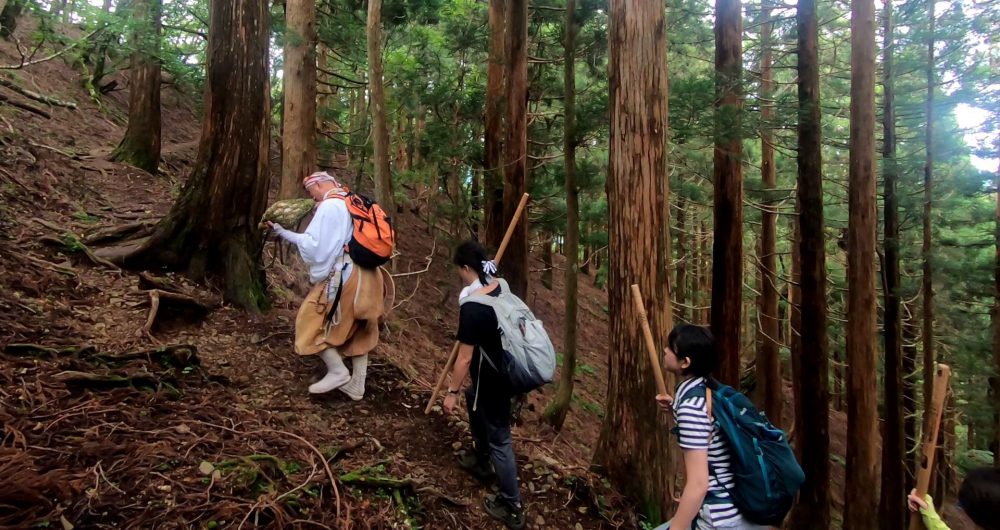In September of 2019 I had the chance to hike Mt. Inamura with a Shugendo yamabushi guide. This article is a summary of the information I gathered from my experience.
Mt. Inamura is a mountain characterized by its beautiful primeval forest scenery and relatively pleasant trail that winds its way gently up to two dramatic peaks (Mt. Dainichi and Inamura Peak). It also has deep cultural significance in its history tied to the ancient, indigenous Shugendo faith of Japan. I cannot recommend this hike enough as its scenery is truly special in a day and age where original high-elevation woodland in Japan been nearly entirely replaced by artificial forests intended for use in a now largely abandoned lumber industry.
Mt. Inamura is a lesser known sacred mountain located in Tenkawa Village, standing parallel to the more famous (and origin location of the Shugendo spiritual tradition), Mt. Omine. The mountain has long been called by its nickname: “women’s Mt. Omine,” as it has served for generations as a popular spot for women to do spiritual mountain training (known as “shugyo”) due to the ban on women that once existed (and still exists on Mt. Omine itself) around the length of the neighboring Okugakue Pilgrimage Route. The different routes branching out between different holy sites through this rugged and sacred landscape have been historically the paths used only by ascetic worshipers.
The Hike
Access to the trail up Mt. Inamura can be found in the Dorogawa District of Tenkawa, which is famous for its scenic mountain views and traditional streetscape lined with ryokan and shops. Walking through the town, it is not unusual to find Shugendo practitioners (known as “yamabushi”) dressed in their traditional garb and friendly shop managers greeting you as you pass by. Dorogawa is also famed for its delicious mountain water, with a special self-serve water pump location available for folks to use if they wish to fill their own bottles (all-you-can-take for 500 yen, no less!).
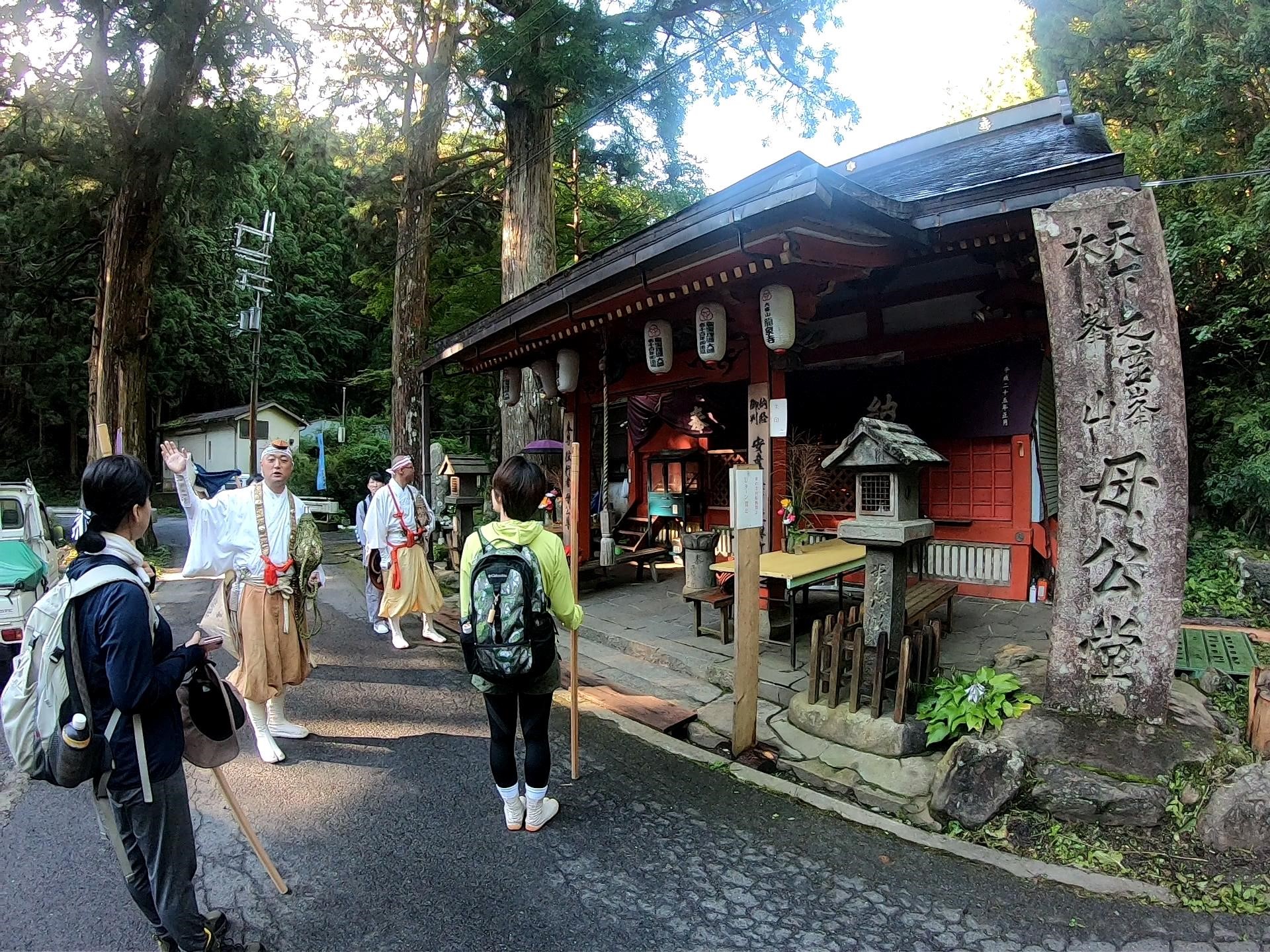
Temple dedicated to the mother of En-no-gyoja, the founder of Shugendo.
Just up the road from Dorogawa is the trailhead for Mt. Inamura, located next to the old border for the area of women’s prohibition. This border is marked by a small temple dedicated to the mother of the enigmatic founder of Shugendo, En no Gyoja. It is customary to stop and pray at this temple before embarking on the hike up to Mt. Inamura, and so we did under instruction from our yamabushi guide, Mr. Otsuka. The crisp late-summer morning air suddenly filled with the deep calls of traditional conch shell horns (known as “horagai”), used to begin and end sacred rituals by yamabushi since ancient times.
The rising sun through the trees made beams of light out of the misty air, giving the atmosphere of the forest a truly magical feel. After the ritual concluded, our guide gave us a brief explanation of what the route would encompass and were led to begin our hike.
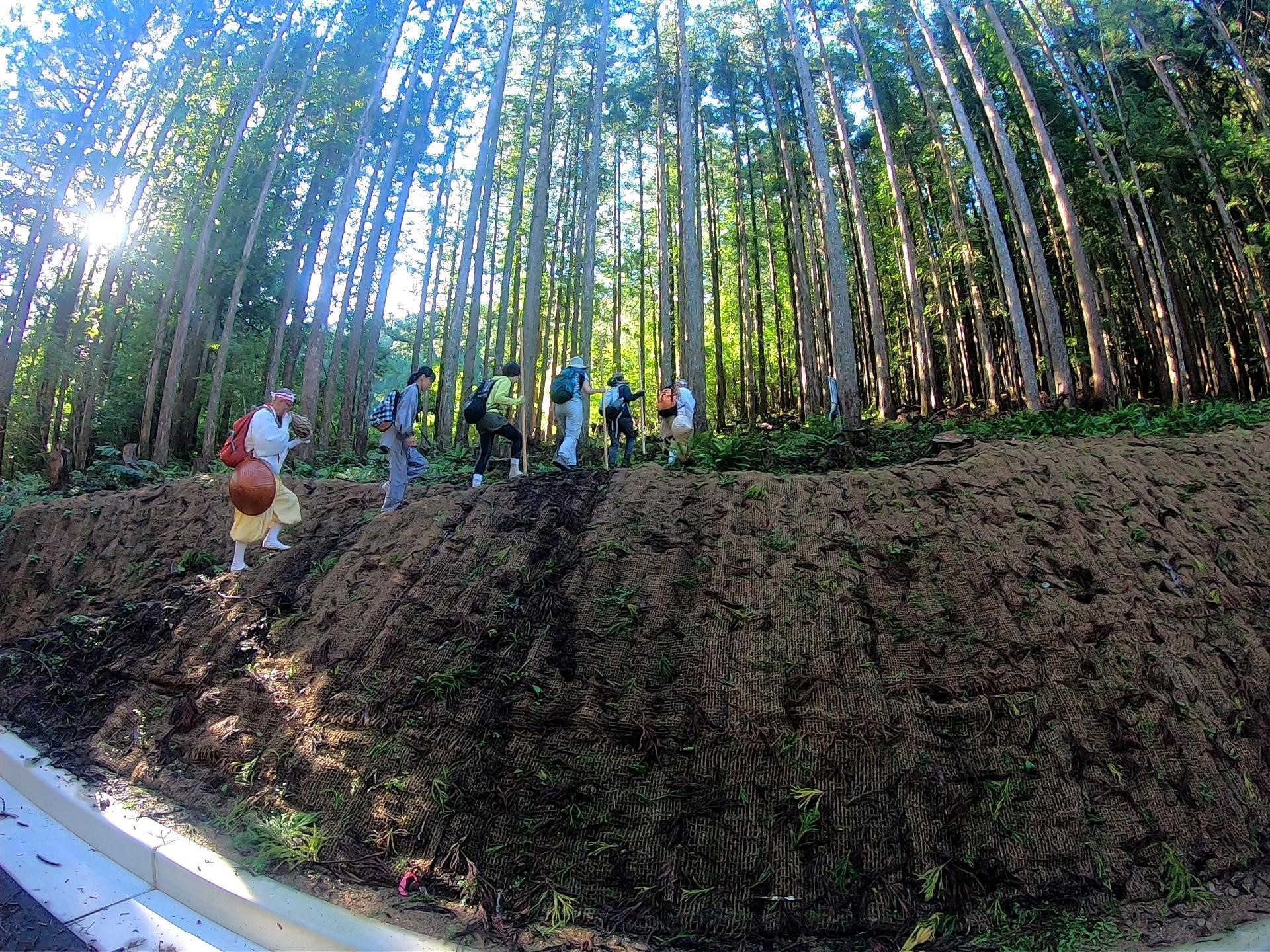
The first 1/3rd of the hike follows a narrow trail through artificial pine forest, parallel to a small mountain creek. When walking this hike for the previously mentioned purpose of shugyo, it is appropriate not to speak outside of resting time, as you are hiking for a spiritual purpose, rather than recreational.
The surrounding scenery is quite nice for an artificial forest, but one odd thing that always stands out is the lack of sounds made by animal life, as the limited plant diversity does not make it a friendly habitat for many of Japan’s wild creatures; this is made especially apparent when everyone is walking silently, as we were. Occasionally the odd sound of a chirping or shrill cry of a deer can be heard echoing through the forest, but otherwise the thick woods feel like some kind of empty cathedral of nature, dark and eerily peaceful.
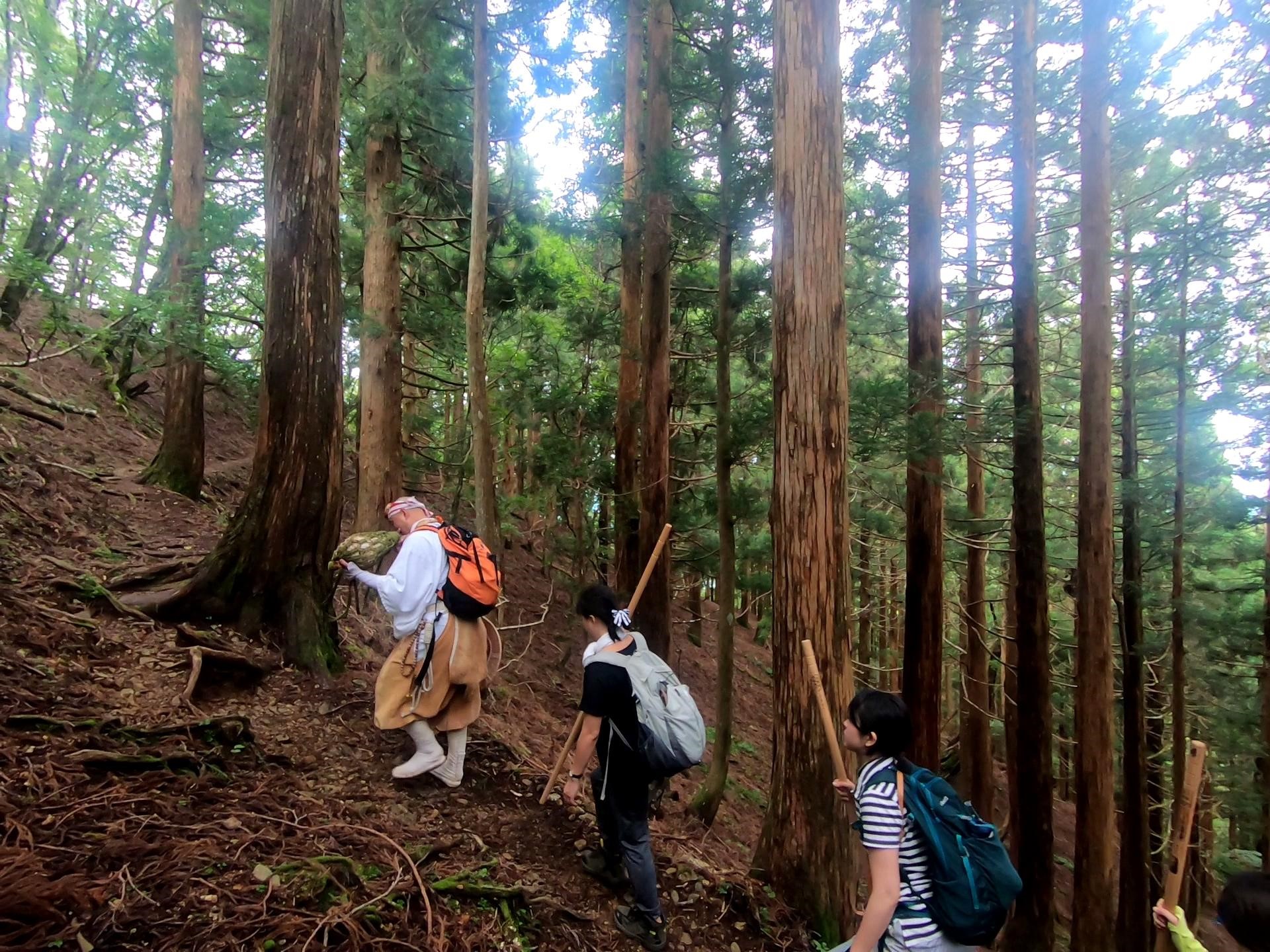
Mr. Otsuka, our yamabushi guide, leads us while blowing a conch shell instrument known as a “horagai”.
Lucky for those seeking more than just artificial forest for their scenery, about 1/3rd of the way through the hike the trail crests a ridgeline and everything shifts dramatically from pine tree gloom to more open, natural forest. Surrounding mountains can suddenly be seen through the open trees and your heart is lifted all the way up to the heights visible around you. From this point onward was my favorite section of the hike by far. The diversity of plant life and the interesting, rocky quality of the trail, winding its way around the mountain to the peak, make it, in my opinion, a much more aesthetically pleasing path the what you commonly find in the region of Yoshino.
As we continued to hike, we stopped here and there to marvel at the different life around us, with our guide remarking on the various kinds of trees, moss, small plants, and so on along the way. The theme of man vs nature is also fitting for this trail as the erosion and heavy storms have certainly taken their toll on it. Various rickety bridges spanned gaps in the path, where small lines of water could often be seen making their way down to the depths below. This complexity and weight of this trail infrastructure made me wonder how exactly they managed to get all up into the backcountry, and, given its current state of disrepair, how often it saw maintenance.

Watch your feet when walking across the bridges.
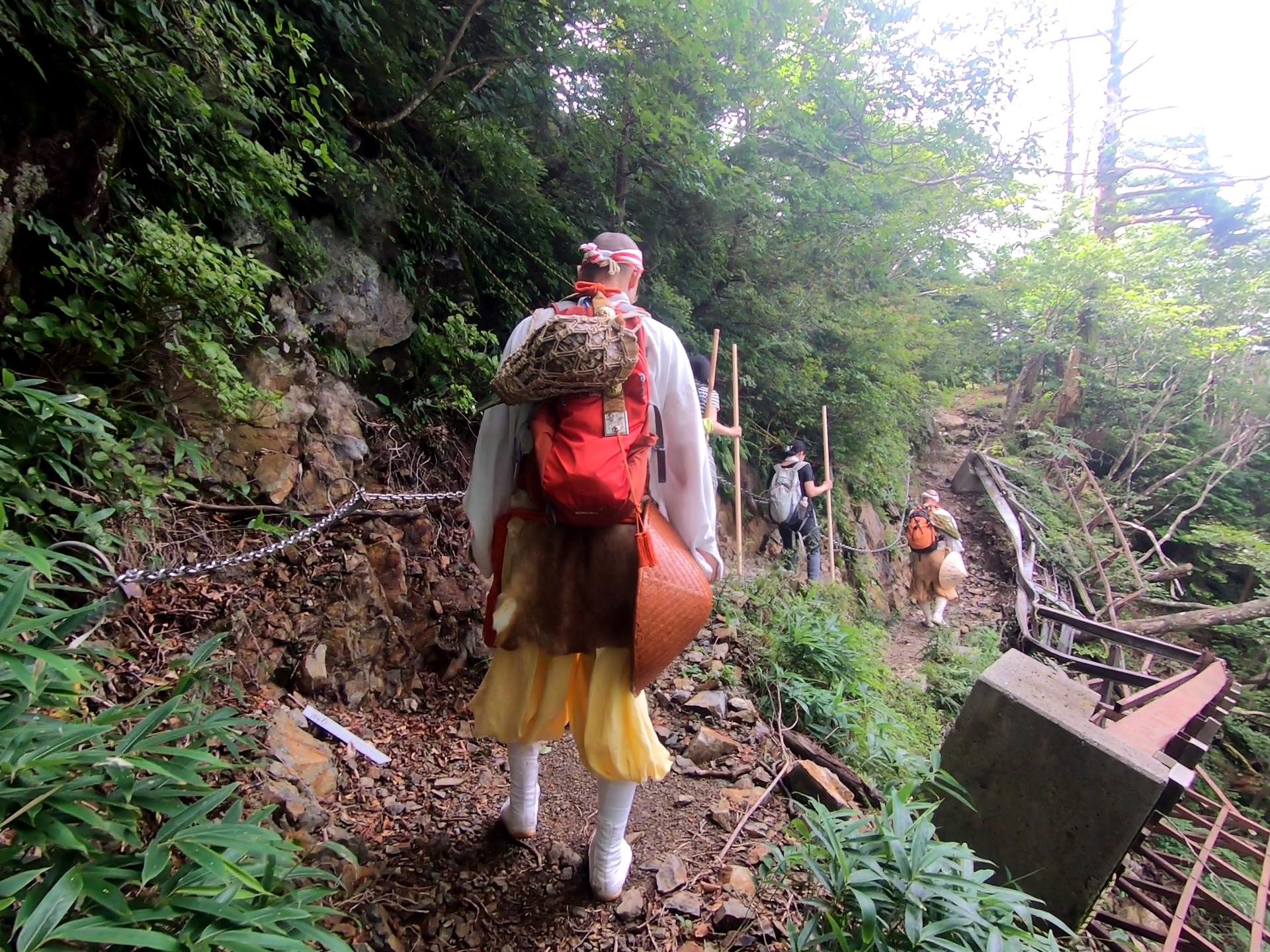
Wreckage of a past bridge.
Prior to modern times, if the trail eroded away or was washed away during a particularly large typhoon, people just dealt with it by forging a new path; it was part of the spiritual training of climbing these peaks. Now that the area probably sees more hikers than actual pilgrims, it is understandable why they would try to focus on trail management, but it still is somewhat off putting when you run into a series of large, rusty metal bridges in the middle of a pristine forest.
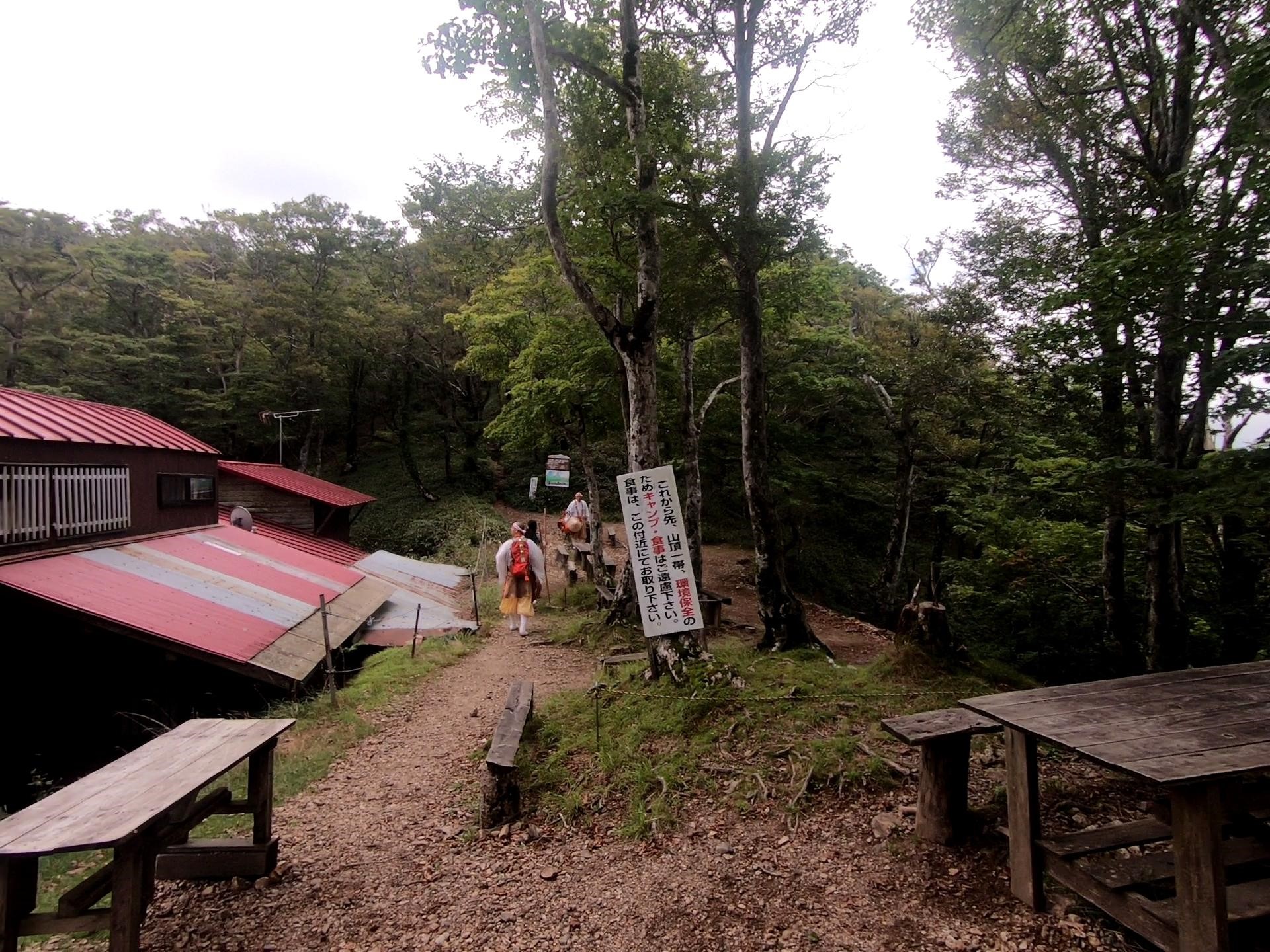
Just below the final climb to the last section of the hike, the trail runs into an old mountain lodge constructed for yamabushi to use as a place to stay the night. Around this lodge are a series of picnic tables and a bathroom that make it a suitable location to take a well-earned break. From this point, the twin peaks of the top are about a 30 minute hike away.
The first peak of the mountain, Danichi-yama, is named after the Buddhist deity Danichi-nyorai. Dainichi-yama juts out of the rest of the surrounding terrain like a knife’s edge, with the southwestern-facing side being a beautiful sheer cliff. I found the ascent to the peak to be really fun as you are required to do a bit of light climbing to get to the top.
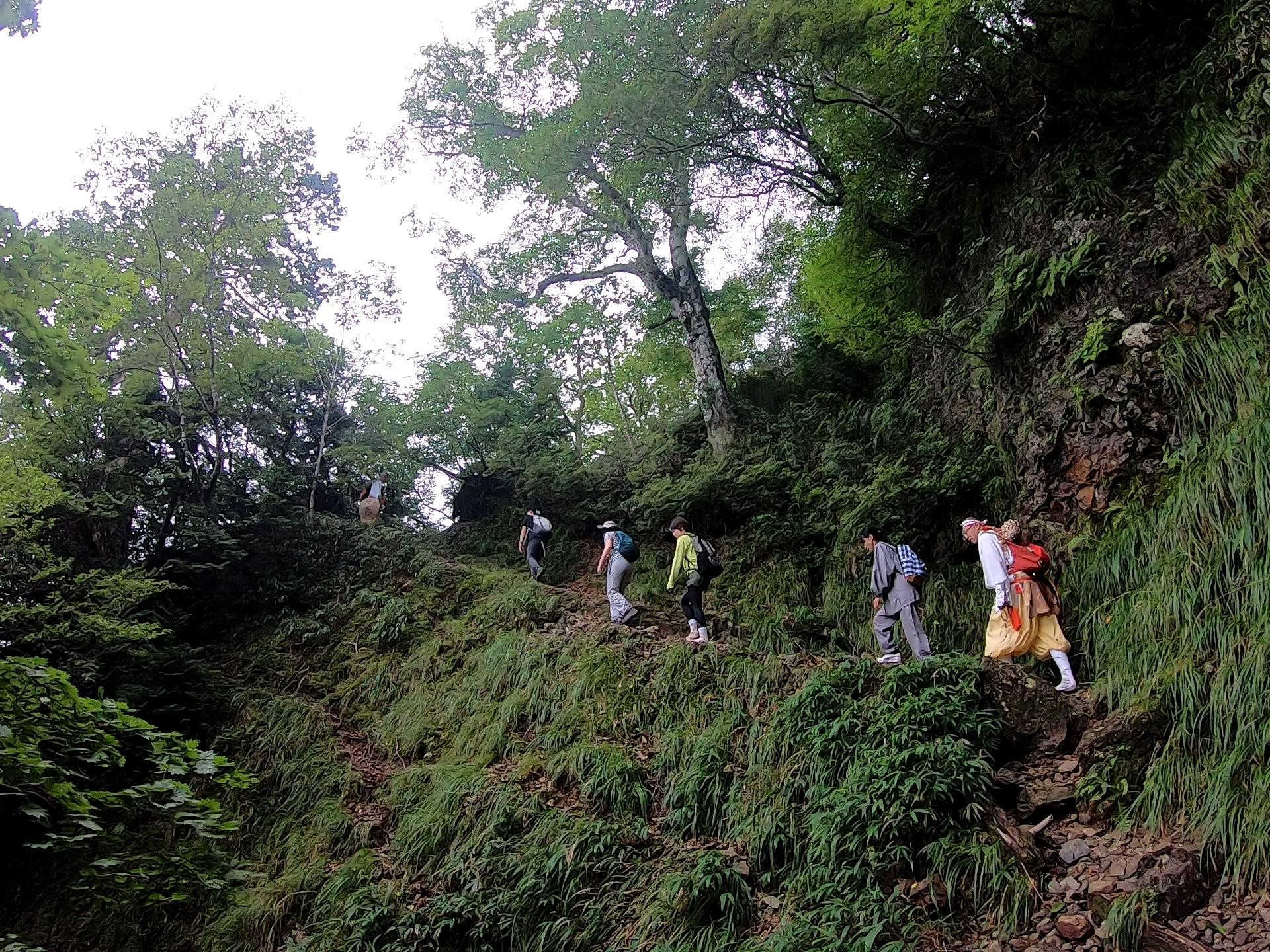
Ascending the crag of Dainichi-yama
There are also some spots where you are walking right along the edge of the cliff face which makes it a particularly exciting. At the top of the mountain is a location where yamabushi stop to conduct prayers.

After returning to the main trail from Danichi-yama (you have to backtrack here), the path leads to the 2nd peak (Mt Inamura proper) which is the final and highest point on Mt. Inamura. This ascent was not nearly as exciting as the knife-edge ascent of Dainichi but it still required a little bit of scrambling. At the top of this peak is a platform built specifically to reward hikers with a fantastic 360 degree view of the area. A near-endless amount of steep and crumpled-together ridgelines can be seen in all directions, reflecting Japan’s location on the seismically active Ring of Fire. The difference between the natural and artificial forest can be seen quite clearly, with Mt. Inamura and the neighboring Mt. Omine being an island of diverse plant life in the sea of oddly ubiquitous pine. Though I understand lumber is an important and old industry of the area, it kind of made me sad to see so very little of what must have been a truly stunning natural forest in times long past. That being said, it is great that at least some of the old natural forests can still be experienced in places like Mt, Inamura.
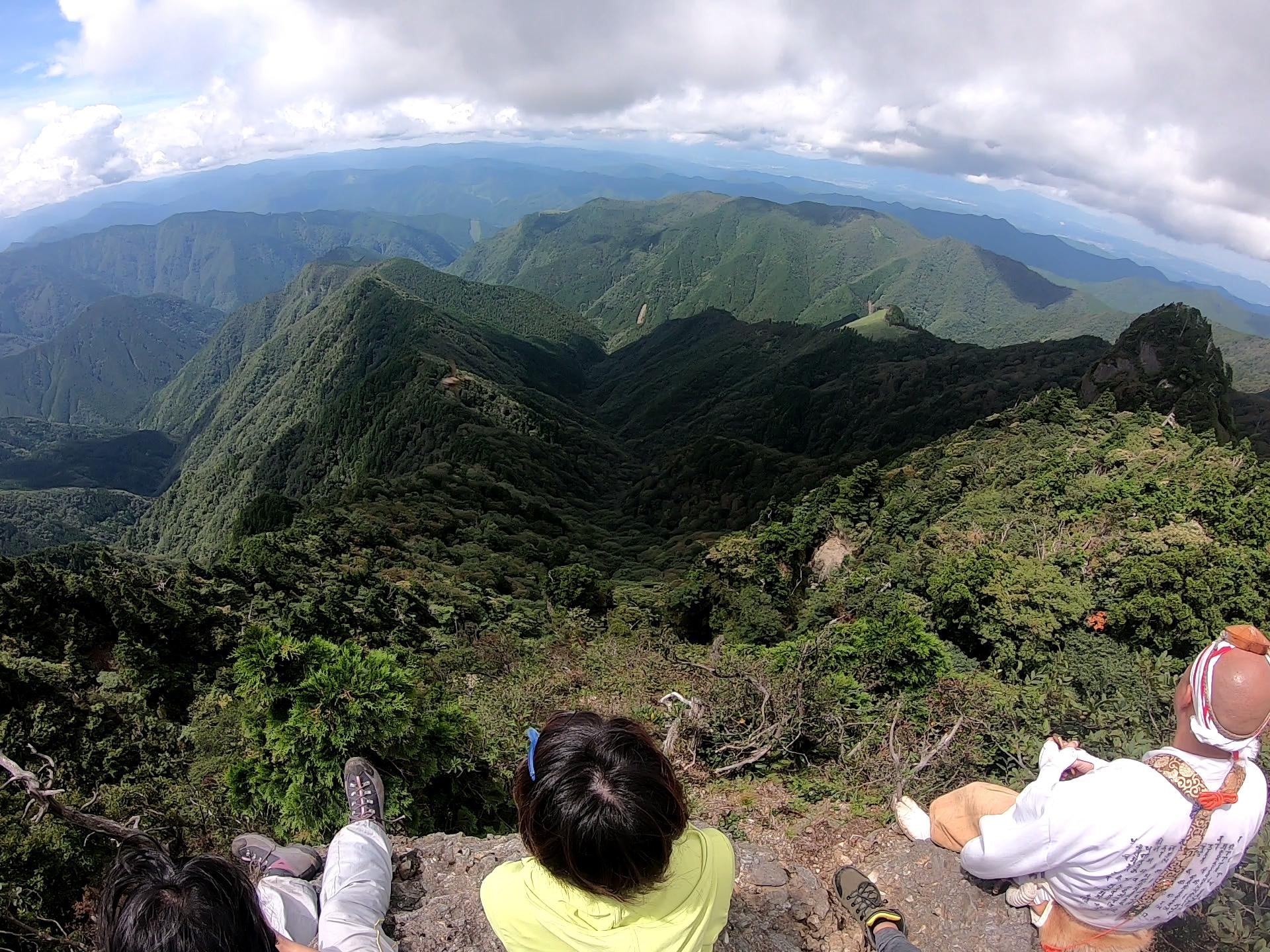
Sitting down for lunch on the platform, we quickly realized that there seemed to be an entire ecosystem of insects flying about above the treetops surrounding us. Flies, dragonflies (which were probably eating the flies), butterflies of many colors, and various other insects I could not identify, buzzed about us in all directions. A particularly friendly butterfly, which decided to perch itself on our guides head, made for a popular photo op for many of the participants. Besides the platform, Mr. Otsuka also led us to somewhat secret overlook point that gave us an even more dramatic view of the are (it is located around and behind the base of the platform, if you want to look for it).
After concluding these activities, we headed down for what would be a largely uneventful descent. It did give me some time to think about how lucky I was to be able to experience a beautiful place like Mt. Inamura; despite its reputation as a traditional place for female Shugendo practice, everyone was still allowed here. Maybe this is part of the reason I ended up enjoying Mt. Inamura more than my hike up neighboring Mt. Omine; it felt more open overall. I enjoyed hiking it with my female companions, and it felt more inspired to share my experience with others afterwards given that everyone can go and experience the same thing for themselves. At one point, a long line of female yamabushi passed us silently on their way up the mountain, carrying centuries of tradition in a sacred place that I felt welcome to be a part of, if only to witness it.
Overall, Mt. Inamura makes for a fantastic hike. In fact, for me I would say that it was more satisfying hike than its famed neighbor, Mt. Omine, due to the more open-feel of the forest for the majority of the trail. On that note, this hike should appeal to you if you are interested in spiritual history, a natural forest with a variety of plant life diversity, and some fun scrambling up a couple dramatic peaks. Most of the trail is actually pretty easy to walk and would make for a good hike for those who want a more moderate challenge.
If you have access to a car, Mt. Inamura would make for a fine day hike, even doable from the metropolitan area of Osaka. If you not, you can always grab a bus from the Shimoichi-guchi train station and (just to make things easier) maybe plan to stay the night one of Dorogawa’s many beautiful inns. Lastly, though I had the assistance of a guide on this hike, the trail is fairly straightforward and should not be very difficult to navigate on your own, regardless of Japanese language ability.

